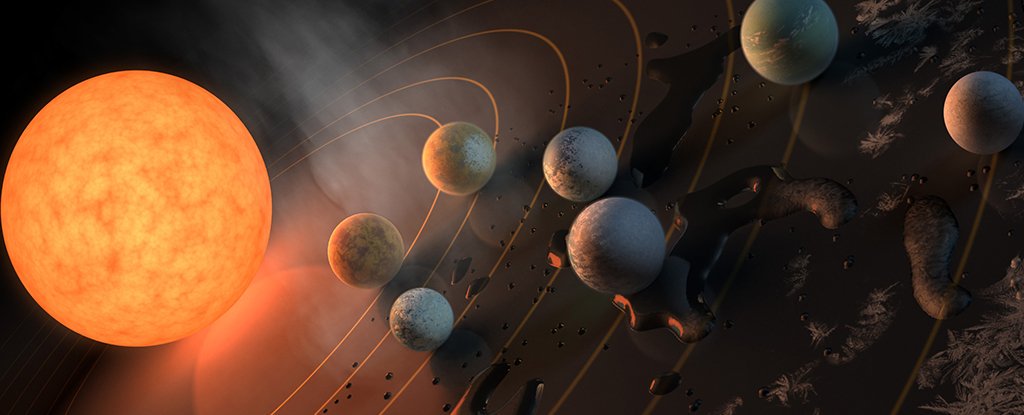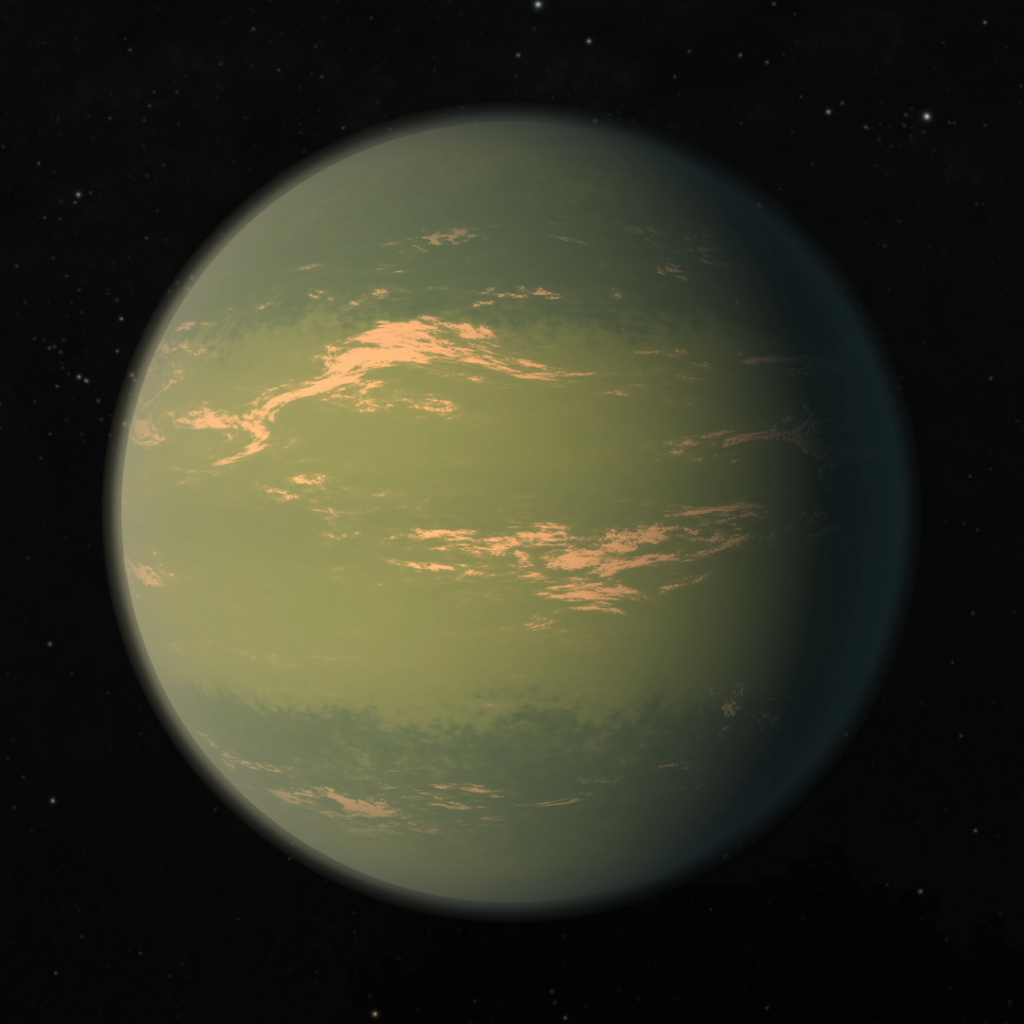TRAPPIST-1 is a very compact system. All its planets are closer to their star than Mercury is to the Sun. The distances between them can be compared to those of Jupiter’s moons rather than to those of the planets of the Solar System. But there are two fantastic ice worlds on its outskirts.

Ice and steam on TRAPPIST-1g
The sixth planet of the system orbits at a distance of approximately 7 million km from its star. It makes one revolution in 12.5 Earth days. Although TRAPPIST-1g’s orbit is still six times closer to its host than that of Mercury, it already lies beyond the outer limit of the “habitable zone”.
The planet is about 15% larger than Earth, but at the same time it is slightly lighter. This gives scientists reason to suspect that it largely consists of water in various states of aggregation. Models of the interaction of magma, ocean and atmosphere show that TRAPPIST-1g must have a dense shell of water vapor.

But it is not known for sure what conditions exist on the planet now. Without taking into account the influence of the atmosphere, the temperature on it should be in the range -78 to -109°C. However, the atmospheric greenhouse effect can heat it up a lot. So it is quite possible that there is a global ocean hiding under the gas shell.
Meanwhile, most researchers are inclined to believe that TRAPPIST-1g’s atmosphere cannot support temperatures and pressures sufficient for liquid water to exist. Most likely, this planet is an exotic world with an atmosphere of water vapor, denser than Earth’s, coexisting with a solid crust of extremely cold ice.
Ice dwarf TRAPPIST-1h
TRAPPIST-1, the most distant planet from the star, revolves around it in just 18 Earth days. Its average distance from the star is still smaller than that between the Sun and Mercury, but, despite this, the planet resembles a small frozen Earth.
Research shows that the radius of TRAPPIST-1h is 78% of Earth’s. But this planet has only 33% of the Earth’s mass. At the same time, there is a lot of water on it, which should form a sufficiently thick ice crust.

Theoretically, even this planet could have a coat of liquid water, which would mean potential habitability. But this is possible only if there is a thick atmosphere that would cause a significant greenhouse effect. But studies carried out in 2021 and 2022 show no signs of a gas shell around it. So, most likely, the surface of this world is devoid of life. That does not at all exclude the possibility of its existence in the ocean under the surface, which is quite likely in the presence of volcanic activity on the planet.
Other interesting facts about the system
In general, the TRAPPIST-1 planetary system has several interesting features. All its planets move in orbits close to circular ones. At the same time, in almost all of them, the axial rotation is synchronized with the orbital rotation. Therefore, unlike, for example, Proxima Centauri b, librations do not occur on them, that is, the local “sun” practically does not move in the sky.
At the same time, the orbits of the planets are so close that when they pass one another, they are visible not as bright stars, but as small disks. And it happens once every few days.
All the planets of the system rotate in resonance with each other. The orbiting periods of the first and second planets are correlated as 8:5, the second and third — 5:3, the third and fourth — 3:2, the fourth and fifth — also 3:2, the fifth and sixth — 4:3, the sixth and on the seventh — again 3:2. It quite might be considered some mystical sign, but such “alignments” of orbits arise by themselves as a result of gravitational interaction.
The orbiting of TRAPPIST-1 planets embodied in sounds
You can be sure that we will learn a lot more interesting things about this system. In particular, it can be expected that research by the James Webb space telescope will finally put an end to questions about the composition and temperature of the atmospheres of the planets. It is also possible that its spectrograph will be able to find signs of organic molecules on one of them.
